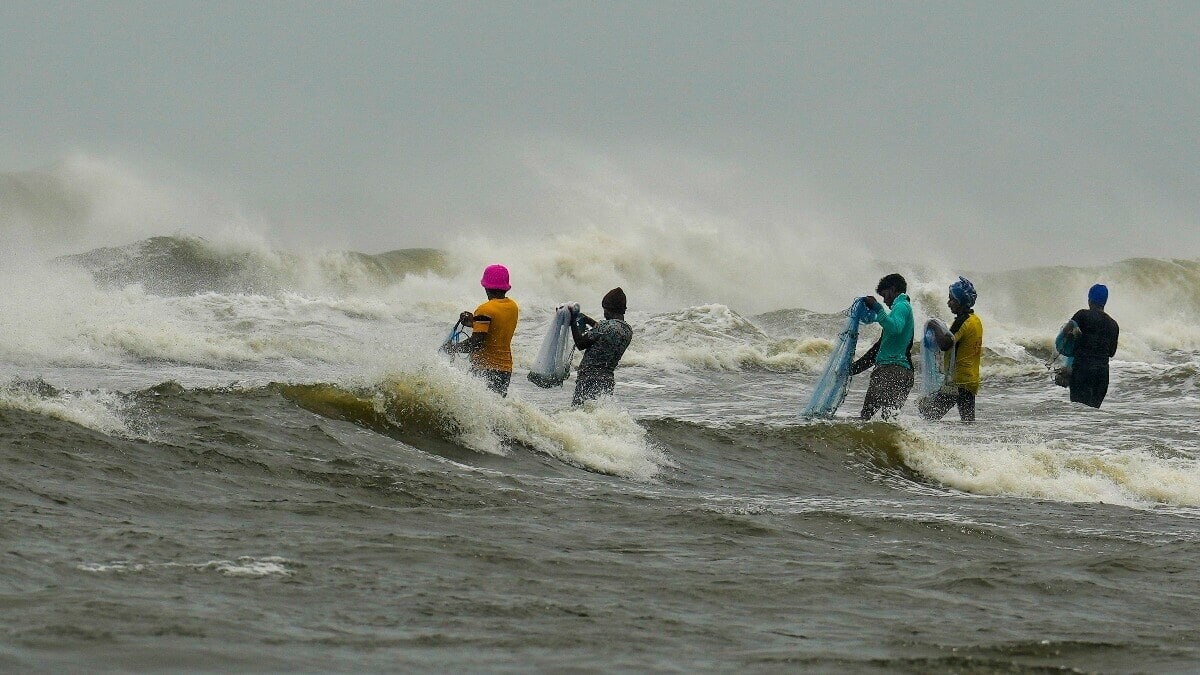
A snow squall warning was issued by the National Weather Service on Friday at 6:42 a.m. in effect until 7:15 a.
m. for Clearfield County. "At 6:41 a.

m., a dangerous snow squall was located over Rockton, moving east at 25 mph," states the weather service. "For those driving on Interstate 80, this includes areas between the Dubois and Woodland exits, specifically from mile markers 97 to 121.
" Locations impacted by the warning include DuBois, Clearfield, Sandy, Hyde, Plymptonville, Rockton, S.B. Elliot State Park, Falls Creek, Treasure Lake, Clearfield-Lawrence Airport and Penn State Dubois.
"Travel will become difficult and potentially dangerous within minutes," comments the weather service. "Consider avoiding or delaying travel until the snow squall passes your location. If you must travel, use extra caution and allow extra time.
Rapid changes in visibility and slick road conditions may lead to accidents. There is no safe place on a highway when a snow squall hits. Visibility and traction are immediately lost in whiteout conditions, making it difficult or impossible to slow down and avoid stopped vehicles.
Delay travel or safely exit the highway before the snow squall arrives." Snow squalls are intense winter weather events often associated with strong cold fronts. They can quickly blanket roads with snow and ice, even without a major winter storm in the forecast.
Typically lasting less than an hour and resulting in minor snow accumulation, these squalls can still be dangerous due to reduced visibility, gusty winds, and rapidly dropping temperatures. Unfortunately, these conditions have historically contributed to serious and sometimes fatal traffic accidents. The difference between a snow squall and a snowstorm is the duration of the event.
Snow squalls are usually very short-lived (on the order of 30-60 minutes) and extremely intense. A snowstorm could last for several hours or even days. Snow squall warnings are rapidly issued for specific areas, much like tornado or severe thunderstorm warnings.
They offer crucial, localized information aimed at saving lives. If an alert for a snow squall is issued in your area, it's best to postpone or avoid driving until the squall moves on. In response to a snow squall warning, individuals should follow the guidelines provided by the weather service, which encompass the following key actions: Avoid or delay travel: If a snow Squall warning is issued for your area, avoid or delay motor travel until the squall passes through your location.
There truly is no safe place on the highway during a snow squall. Reduce speed and increase visibility: If you are already in transit and cannot exit the road in time, reduce your speed, turn on your headlights and hazard lights. Maintain safe distance: Ensure there is ample distance between your vehicle and the one ahead of you.
This precaution is essential to account for reduced visibility and the potential unpredictability of road conditions during a squall. Avoid abrupt braking: In slippery and icy conditions, sudden braking can lead to loss of vehicle control. It's safer to slow down gradually to minimize the risk of skidding or causing a chain reaction crash.
Winter weather safety tips: For tips on how to stay safe before, during, and after winter weather, visit the weather service Winter Weather Safety page. Prepare your vehicle: Prior to hitting the road this winter, ensure your vehicle is winter-ready by inspecting tires, brakes, and lights, and confirming all fluids are at appropriate levels. A properly maintained vehicle is more capable of navigating the demands of winter roads.
Essential items for your car's emergency kit: Always have a well-prepared emergency kit in your vehicle containing crucial supplies like blankets, non-perishable food, water, a flashlight, and a first-aid kit. Additionally, include jumper cables, flares or a reflective triangle, an ice scraper, a car cell phone charger, a map, and cat litter or sand for improved tire traction. These items can be invaluable should you encounter an unexpected breakdown or emergency while on the road.
In conclusion, when faced with a snow squall warning, prioritizing personal safety and adhering to the weather service recommendations can significantly mitigate risks. By understanding, preparing, and staying vigilant, individuals can navigate these winter hazards with greater confidence and security. Advance Local Weather Alerts is a service provided by United Robots, which uses machine learning to compile the latest data from the National Weather Service.
.










